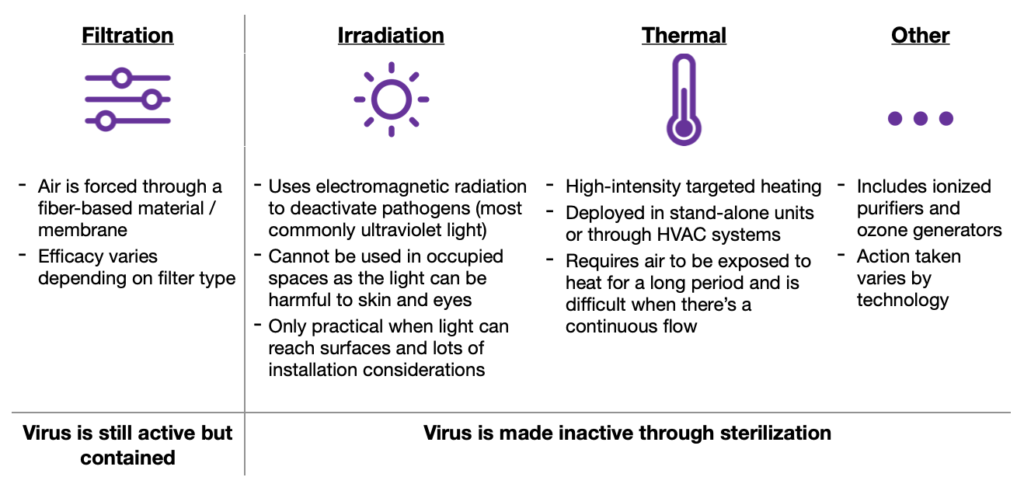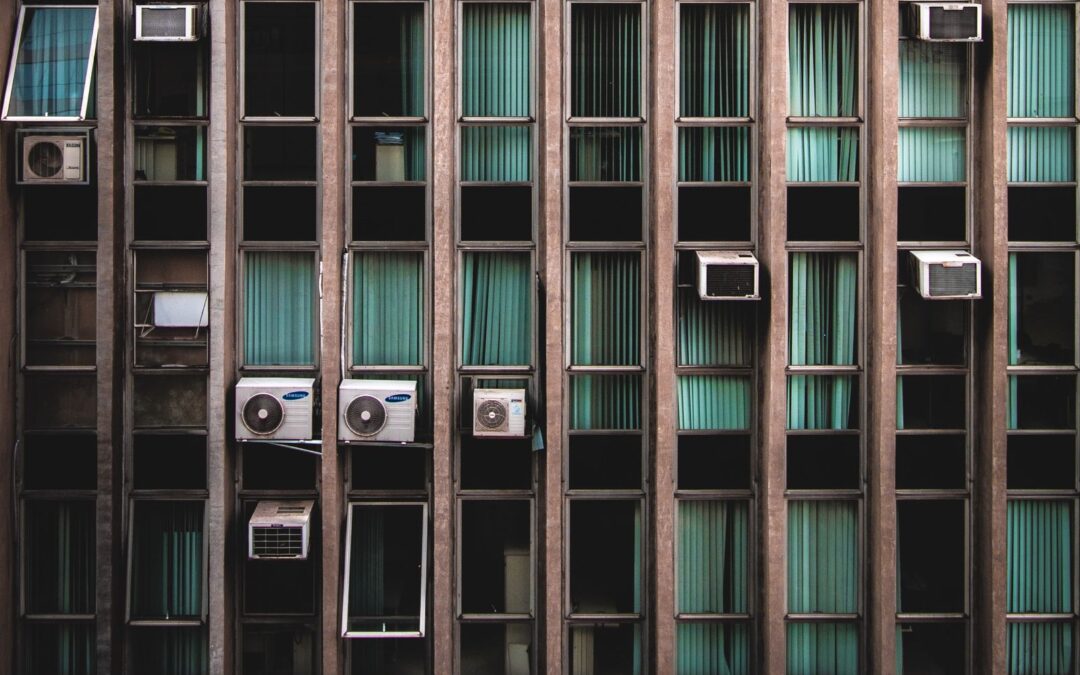Please click here to read Part 1: https://www.allianceengineering.ca/industry/hvac-systems-and-covid-19-are-you-in-the-know/
Given that there is an airborne component to combating the spread of COVID-19, wholistic actions with respect to air quality and purification must be taken as a matter of precaution. The HVAC systems in buildings are an obvious candidate for such actions but we must all think broader with our solution set. The necessary actions we’ll be exploring can be categorized into three groups: HVAC settings and upgrades, air purification improvements, as well as some simple solutions.
1. HVAC Settings and Upgrades
There are HVAC control-setting changes and upgrades that will inevitably help decrease the risk of airborne and aerosol spread of coronavirus. Building managers and technicians will need to reduce air recirculation by increasing the rate of exchange flow of outside air and keeping systems running longer to increase air replacement. Older and more ineffective HVAC systems will need to be upgraded with variable-speed fan motors, pressurized airflow-control, as well as air-purification systems (coming up in a moment).
The American Society of Heating, Refrigerating and Air-Conditioning Engineers (ASHRAE) has also issued suggested HVAC system amendments in their Guidance for Building Operations During the COVID-19 Pandemic material that call for:
- Increasing outdoor air ventilation for more effective dilution
- Disabling demand-controlled ventilation (DCV)
- Opening minimum outdoor air dampers as high as 100% to eliminate recirculation
- Improving central air filtration (MERV-13 or the highest compatible with the filter rack) and sealing the edges to limit bypass
- Keeping systems running longer (ideally 24/7) to enhance the efficacy of these actions
2. Air Purification Improvements
Building on the HVAC section, air purification becomes the next step in terms of air quality improvement in indoor spaces. We can further break down the air purification strategy into filtration, irradiation, thermal sterilization, and other methods. Filtration is the most common method for HVAC system improvements consisting of a pre-filter installation at an air intake point and a mechanical filter that uses fibers to trap viral particles. Irradiation (e.g. ultraviolet germicidal irradiation), thermal, as well as other technologies (e.g. ionic purifiers and ozone generators) actually sterilize and inactivate particles on the biological level.

Mechanical filters have different efficiency ratings tied to the percentage of particles they capture — the MERV-13 recommendation from above captures 50-85% of particles that are 0.3-1.0 microns in size. High-Efficiency Particulate Air (HEPA) filters are most effective at removing the smallest particles, and are therefore encouraged with portable room air cleaners, but will not completely remove the possibility of airborne transmission. For this reason, it’s important to employ aspects of all strategic approaches outlined here and below — complex problems require multi-faceted solutions!
3. Some Simple Solutions
So let’s keep it simple — but not stupid — by looking at some more basic strategies that can be taken to prevent the spread of COVID-19 in buildings. Actions as simple as limiting the number of people to a room, placing desks back-to-back (with partitions), and rearranging furniture to avoid having people share the same “airflow corridor” (not just social distancing) will play a huge role in basic safety. In addition to simple hand washing and sanitization, opening windows (in buildings with basic HVAC systems that do not pull in outside air) or locking windows (in buildings with central HVAC systems) is an easy step to ensure fresh airflow and keep turbulence due to temperature change low respectively.
Please contact Alliance Engineering for more information on HVAC system changes and upgrades as well as building optimization solutions based on sustainability programs like LEED® and BOMA BEST®. We also recommend that you download ASHRAE’s 2020 Managing Your HVAC Systems to Help Mitigate the Spread of SARS-CoV-2 in Buildings PDF which provides extensive guidance on Building Readiness.
Please click here to read Part 3: https://www.allianceengineering.ca/industry/hvac-systems-and-covid-19-all-about-airflow

